Mercury is passing the sun disk
May ask yourself, which
picture can bring this over dimensional sun "volcanism" together
with the gates of our inner earth.
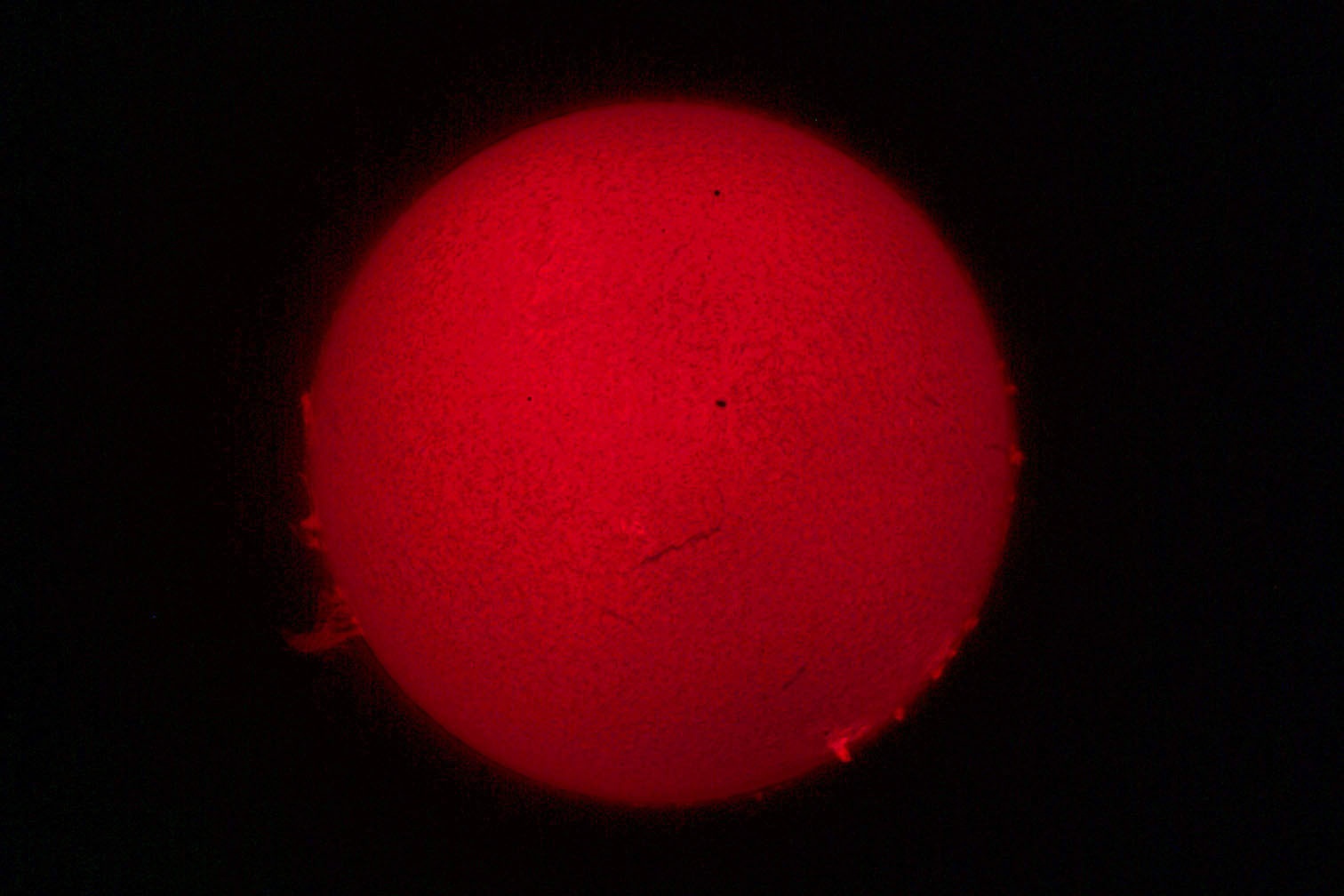
©2003 by Baader Planetarium

This fascinating shot is part
of a project of the Baader Planetarium. It was taken by Martin Rietze,
M. Riesch and A. Baader with a Zeiss APQ 100/600 SolarSpektrum 0.5 A.
For more photos and explanations roll down to the astronomie.de link |
|
The drop phenomena
 |
|
|
It seems that mercury will
not loose himself from the sun edge. May one reason is the
sunlight-bending at the planet surface. By forcing up the contrast in
this image, it may was possible to show this known phenomene.
|
|
Photos |
|
|
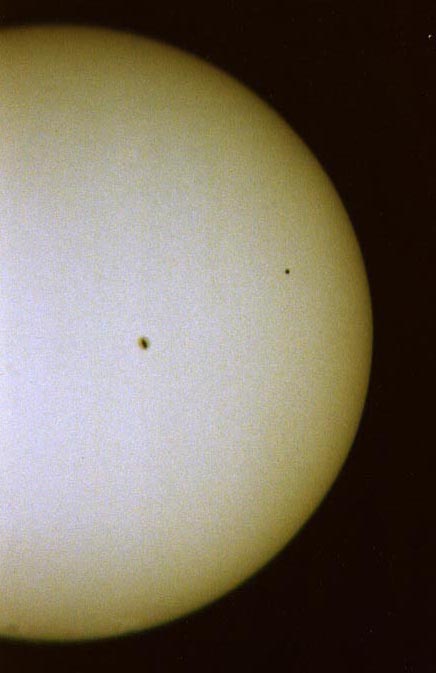
|
|
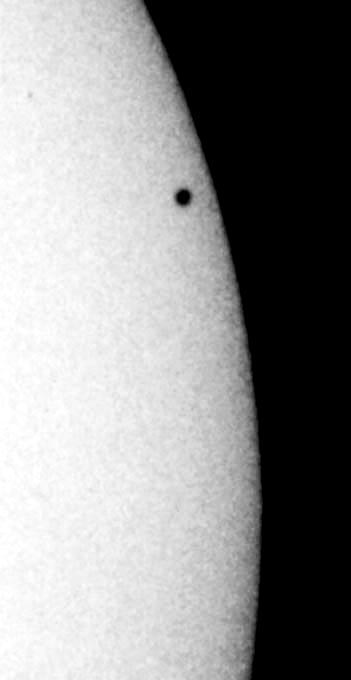 |
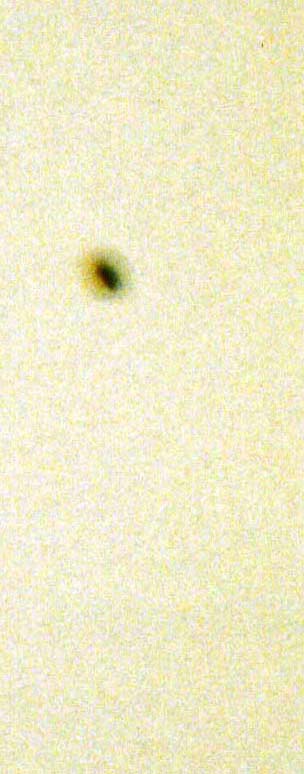 |
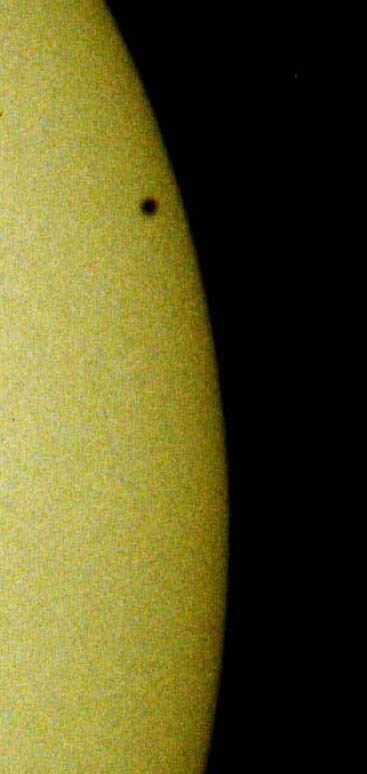 |
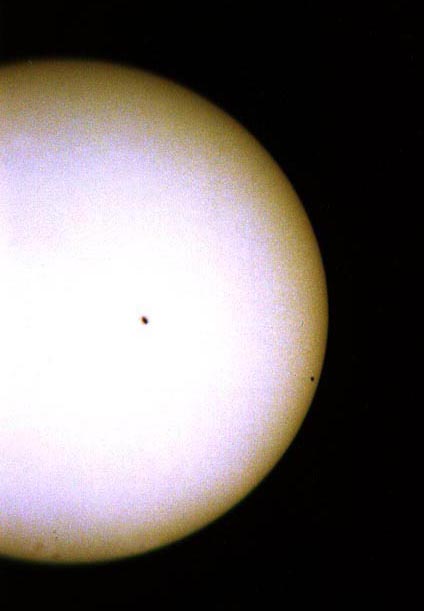
|
|
|
|
Left: Halftime
(ca. 45° moved on the right side)
Middle: Exit( ca. 45° moved on the right side)
Right exit ( ca. 20° moved on the right side) |
|
The
point near the center is a sun - spot
Photos are
taken with a Siberia 150mm Newton Reflektor, on Fuji color ASA 400, Bel.
1/500 sec, aquivalent focal distance about 4000mm. Advice: Because of
aethetic reasons I deprivated the grey and blue color which is caused by
the sun foil.
|
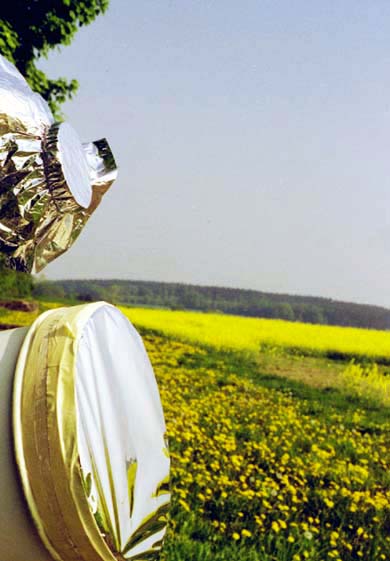
|
Thanks to Hans Kraus and my
brother Thilo. They supplied me with food and drinks to avoid a heat
delirium on this moskito hill in Germerswang.
Next mercury
transit 2016 !!
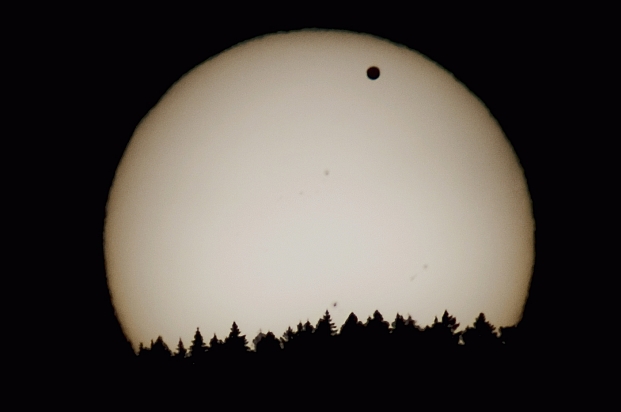 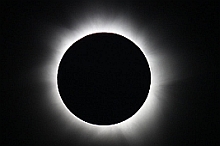 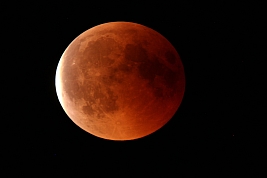 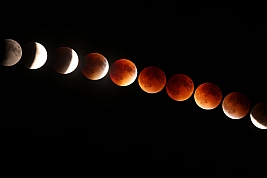   ges_ausch_f.jpg)  
All eclipses & occultations
   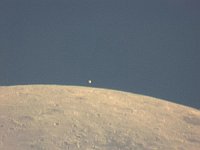 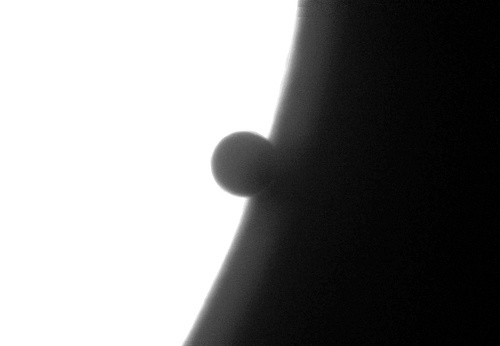   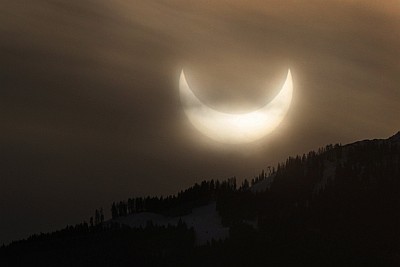 
|